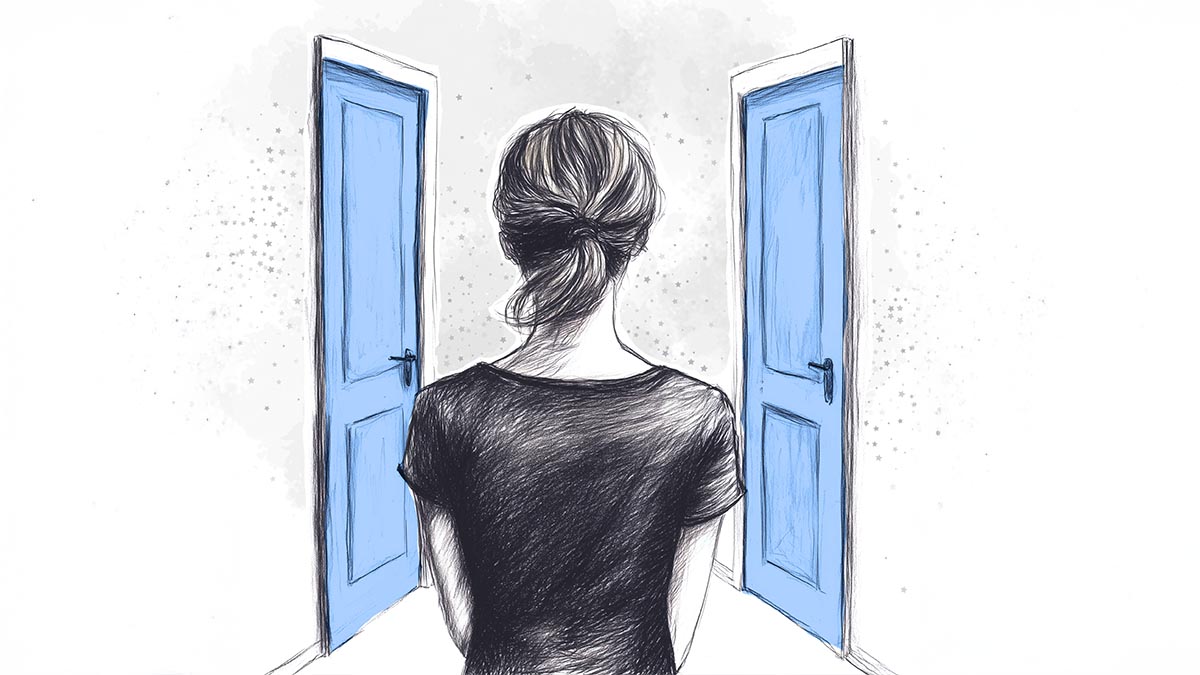Find freedom from guilt by learning how to balance rules with grace, and create a parenting approach that truly fits your family.
I was never going to be that mum. The one who uses a device as a babysitter, co-sleeps with her child, buys “plastic-fantastic” toys or feeds her child nutritionally poor food. My child was going to grow up screen-free, always listening and loving vegetables.
Then I had a child.
The child I had was not the one I thought I would have (unsurprisingly, I now know). All my unfulfilled (unrealistic) expectations burst as my child became incredibly well-versed with using our mobile phones, slept in our bed, collected an assortment of plastic trinkets and, after he started solids, declared ice-cream his favourite food.
As the remains of my expectations lay in pieces on the floor, my sense of unease remained, my feelings of guilt strengthened.
Mum guilt
Feeling guilty seems to be a prerequisite for being a mum. It’s as if every mum gave birth to guilt the same time their child (or children) were born. Unlike our child, though, the guilt never grows up and leaves the nest, so to speak. It simply stays with us for the rest of our lives.
Are we doing enough for our children? Are we giving them the best chance? Are we causing harm? Are we doing the right thing?
When there’s no definite right or wrong, when things are grey, it’s easy for us to constantly second guess ourselves and assume we’re making mistakes, assume the worst. It’s also interesting how mums seem to feel guilt more keenly than dads, but I digress.
The rationale for all the “rules” I developed pre-birth was from research. I’ve read the articles that decried screen time, suggested breast is best or advised sleep-training. If my child met those expectations, he would be protected, he would develop optimally, and he would have a healthy brain, body and life.
Naturally, when my YouTube account had Cocomelon videos in high rotation and my child was formula-fed, I believed I had failed him.
Would he grow up addicted to the screen? Have I ruined his developmental trajectory?
Looking back nine years later, such beliefs were the main reason why I felt like a failure as a new mum. After all, I either couldn’t follow the expert-backed advice or it wasn’t delivering the expected results.
Changing expectations
An interview with a digital wellbeing expert not only changed my view—and guilt—about screen time, it would eventually help shape how I approached my parenting and other so-called hot-button parenting issues as well.
While it is true children should have limited—and supervised—screen time, exposure to a device does not necessarily mean they’re doomed to fail in life.
“Whether you love it or loathe it, the reality is that your kids and teens will inherit a digital future, so they need to learn how to use technology in sustainable and supportive ways. Banning devices or limiting their access won’t allow them to develop these fundamental skills,” says Dr Kristy Goodwin. “Parents need to establish firm, consistent boundaries about how much time their kids spend with digital devices, but they also need to consider other essential questions that go beyond simply using time as the only metric.”
She introduced me to the concept of the displacement effect: If my child’s basic developmental needs are still being met, I should stop feeling guilty about the time he spends with a device (exposed to supervised and age-appropriate content). What she taught me was that while there are certain preferred practices, it doesn’t have to be all-or-nothing.
What is the context? What is the priority? What are we giving up? What are the counterarguments? What are the alternate viewpoints?
Dr Kristy’s philosophy is similar to an approach to life, summed up by my friend Faith with two simple words: It depends.
In the podcast below, Faith delves deeper into the concept of “it depends”.
All-or-nothing
Parenting experts often remind us about the importance of giving children boundaries and being consistent about them. It creates a sense of security and they know what to expect. The working theory is the predictability helps both them and us to better manage behaviours and emotions.
Almost a decade ago, when I became a mum, boundaries to me meant ensuring I removed all the negative experiences, exposure or influence in my child’s life. That is, no screens, no “junk food”, no bending of the rules. Bedtimes were meant to be adhered to, routines had to be followed.
No wonder I came unstuck.
The problem, I came to learn, wasn’t because I tried to create consistent boundaries. It was my all-or nothing attitude. The key here was balance.
Allowing screen time so long as it’s not at the expense of developmental needs.
Recognising formula is just as beneficial as breast milk, especially when your body is incapable of producing adequate quantities.
Letting them enjoy discretionary foods sometimes while understanding their impact on our bodies.
Going to bed late because it was more important to spend time with friends who were visiting or for a special occasion.
Age-appropriate boundaries
It’s important to realise children will notice when a rule is bent in an “it depends” situation. They will be quick to point out the inconsistency (either verbally or behaviourally) if, for example, you allowed device use at the dinner table one day and not the next. It’s the reason why experts tell us to be consistent when giving our children boundaries.
Despite those challenges, I’ve come to realise it’s crucial we leave space for the grey so that we can make peace with our choices and be compassionate to ourselves. The key is to have a valid reason for why the rule has changed—and be ready to explain it to your child in a way that they will understand. It’s not about swaying with the wind, changing rules every other day. It’s about having a consistent rule and allowing for exceptions sometimes.
Instead of chasing the one-size-fits-all solution, we can step back, look at our child, our values and our circumstances, and ask: What works for us, right now? It’s less about defending choices or proving who’s right, and more about creating space for compassion—for ourselves and for each other.
Today, I use devices as a babysitter, co-sleep with my child, buy “plastic-fantastic” toys and feed my child nutritionally poor food. However, my child is also developing well socially, is active, can sleep independently, plays with a range of different toys and enjoys nutritionally dense food.
My child has different boundaries depending on the situation. What is consistent however, is my care and concern for him, and the principles behind the rules.
Tune in to the Life in the Grey podcast

Life isn’t always black and white. Life in the Grey is a Mums At The Table podcast where we explore the psychological factors that shape our relationships, be that as a parent, a partner or a peer. And don’t worry—it’s short because we ain’t got time for fluff. Expect practical takeaways that you can apply to your own life, whether it’s navigating parenting challenges or finding balance amidst life’s demands. Join us each month as we share stories, insights and reflections that encourage personal growth and foster a sense of connection in our community.
How helpful was this article?
Click on a star to rate it!
0 / 5. 0
Be the first to rate this post!

